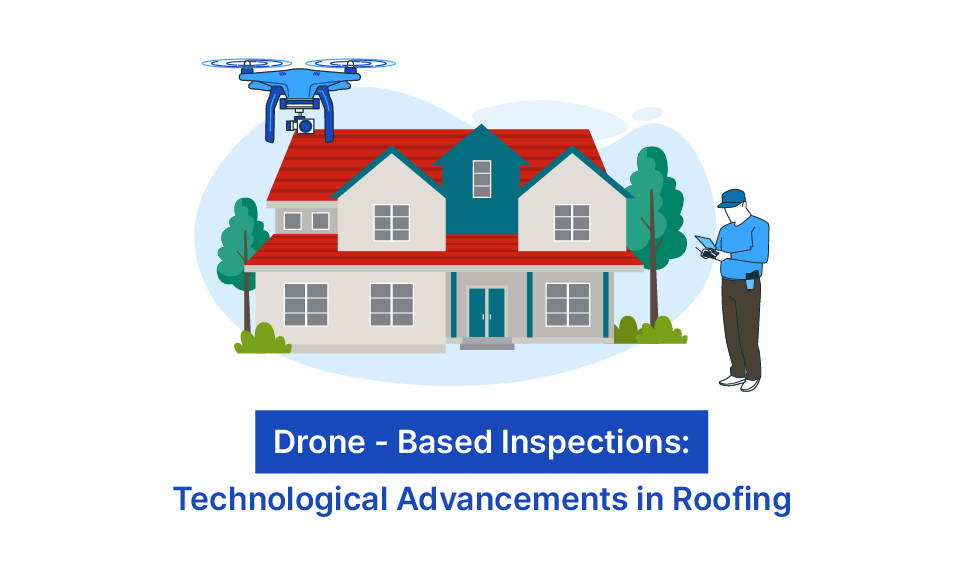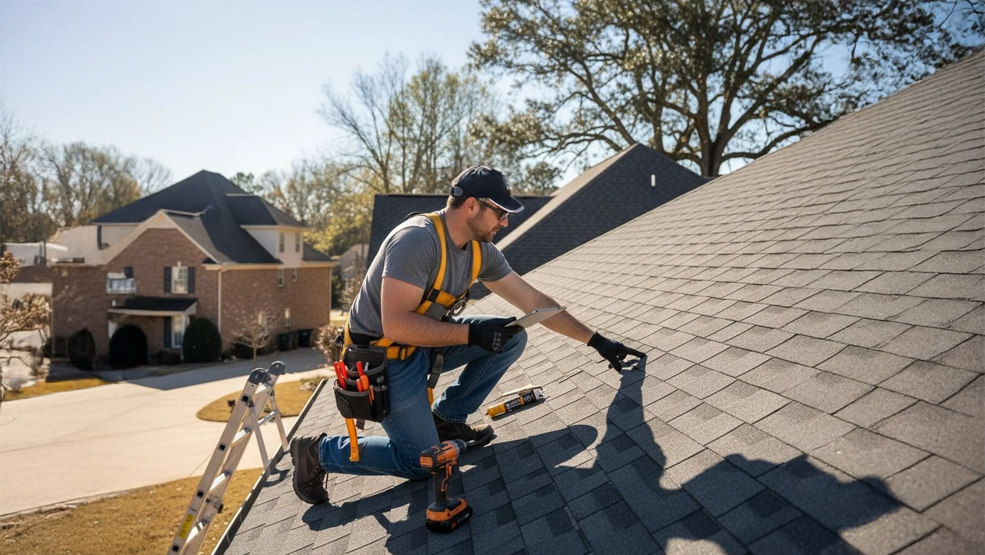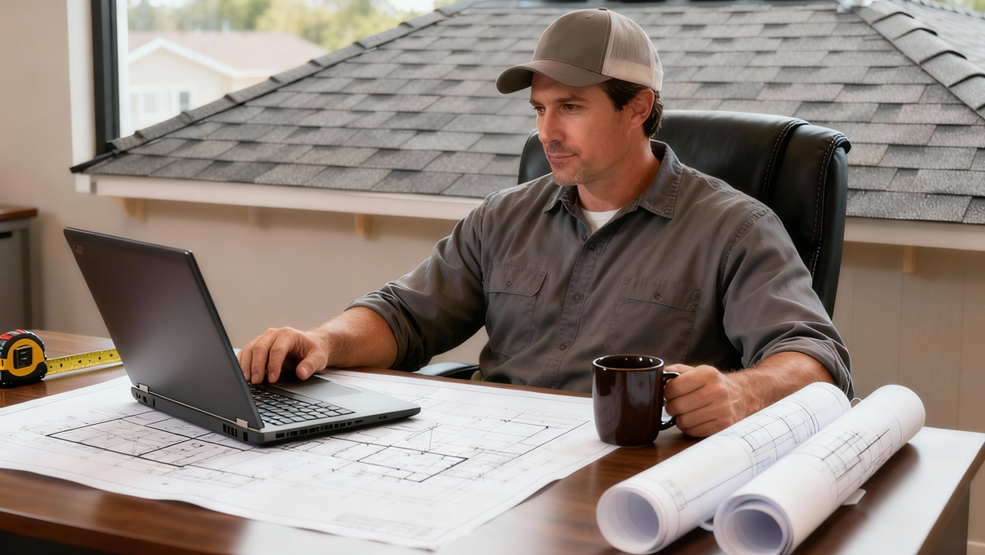Unmanned aerial vehicles or commercial drones have been increasingly used in various industries. The roofing service industry is one of the many beneficiaries of this new technology, and roofing inspection is one of the many applications for drones in the roofing service business.
Drone technology has revolutionized roofing inspection resulting in tremendous productivity, reduced safety risks, and opportunities for automation. Yet, most roofing contractors have not shown much interest and failed to utilize the advantage of roof inspection technologies. If you are running a professional roofing company, don’t be one of them. Read more to know why drones make a greater impact in the roofing industry.
Provides safe roof inspections for the roofers
Never let your roofer get hurt. According to the National Census of Fatal Occupational Injuries in 2020, roofers have a fatal work injury rate of 47 per 100,000 full-time equivalent employees. As a roofing contractor, ensuring the safety of your roofers must be your highest priority.
Traditional roof inspections involve various risky tasks causing severe injury to roofers and damage to the customer’s property. There is no need for them to climb up on the roof and risk injury.
Nowadays, roof structures have complex designs, enormous heights, and inaccessible areas. Anytime scaffolding and ladders are used during an inspection hazards are created and there is an increased risk of injury. Even a professional roofing inspector who spends considerable time on the roofs may get hurt by slipping and falling.
Climbing the roof without having any idea of the roof condition is not a good option. It is better to know the roof condition before proceeding further. Drones can capture an aerial image of the rooftop so that roofers can analyze the roof condition in depth.
Not all parts of a roof can be easily accessed by roofing inspectors. There is no doubt that the trained eye of an inspector can detect minor roofing issues. It is both foolish and costly to put the safety of your workers at risk unnecessarily. Drones can be an excellent tool for mitigating the dangers of roof inspections.
Saves time and increases productivity
When there are many houses to visit, having to inspect each house manually may not allow your roofer sufficient time to complete their work. Manual roof inspections consume significant time to plan and execute the entire process in one inspection. Furthermore, taking manual measurements and assessing the condition of the roof would be time-consuming, and reduce productivity.
When performing maintenance manually, some roofing projects may require more than one inspection session. In cases like these, drones can eliminate the need for multiple visits to a site. Drones can gather all the necessary information about the roof in a single flight. They do not require any physical exertion on the roofer’s part, and a drone can fly in any weather condition.
Many roofers have started to use drones for the above reason. Drones help get the job done faster. There is very little setup needed; your roofer can go to work with a drone right away after the team arrives on the site.
With drones, roofers can now do a more detailed roof inspection. They can capture images and videos from different angles impossible with a ladder or even from the ground. It generates the photos faster and sends all the data to the cloud, allowing roofers to examine the roof condition in minutes. It is recommended to use roofing inspection software to get the most out of technology.
Gives accurate data
Drones can gather in-depth data about roof conditions, which helps identify potential problems. There is a chance of human errors and inaccuracy while taking measurements. The accuracy can be achieved by using drones which give precise any kind of measurements such as roof area, pitch, and length.
It provides accurate reports and a wealth of data that human inspection cannot provide. Roofs are often challenging to inspect manually, but drones can quickly fly over and around to capture high-resolution images and 4K video footage from different angles.
This gives roof inspectors a more detailed understanding of the roofing condition, which can help with making informed decisions about repairs and replacements. Infrared cameras and relevant sensors installed on drones allow roofers to detect minor roof leaks and problems by utilizing thermal imaging technology.
Reduces the risks of manual measuring
The most precise measurements are necessary for commercial and industrial properties. Skilled thermographers use the most advanced aircraft photography technology, capable of capturing fine details from a very high altitude.
A drone can be used to create a 3D model of a roof through the photogrammetry technique. The drones should be equipped with a 4K HDR camera and must be operated by a professional drone pilot. The equipped camera takes several pictures of the roof from different angles and patches them into a single 3D roof model. So, the roofer can visually inspect and measure the distance of the roof model whenever needed. Without having to climb up and take measurements, your commercial roof reporting will be easier, and safer.
The obtained 3D model can be used for measuring the entire roof with no boots on the ground. The minor defects, roof leaks, and repairs can be detected instantly by evaluating the 3D model roof. This will then help the roofers plan the repairs and reduce the risks of manual measuring.
Automates the process
Drone-based inspections automate the complete roofing service. Data obtained can be synced easily with cloud-based data of roofing software, making the process more efficient. The integrated roofing software helps to identify the type of roofing problems automatically and categorizes them. The advanced AI and machine learning tech tools are capable of analyzing and generating the roof evaluation.
The 3D model generated by drone-based inspection helps the estimation process. Manual roof estimation would be a daunting task for a roofer by calculating all the costs. Roofers need to consider different expenses such as roof dimensions, pitch area, etc. Manual estimation would be erroneous sometimes. But, a cloud-based roof software program simplifies the estimation process by using 3D roof models.
It minimizes human error, as mistakes are often made during data entry. So, drone-based automation provides roofers with comprehensive data and analysis reports on roof inspection, thus reducing the time consumed on manual inspections.
Conclusion
The usage of drone-based inspections has shown enormous improvement in recent years. The tedious roof inspection job has become faster and safer without stepping onto the roof. Roofing business productivity can be improved to top-notch by getting accurate results, saving time, and automating roofing tasks.
If you are still thinking of adopting new technologies, this is the perfect time to gear up your roofing service business. Start embracing the recent technological advancements to maximum productivity in your roofing business. Learn more here to know better to increase your business productivity.



